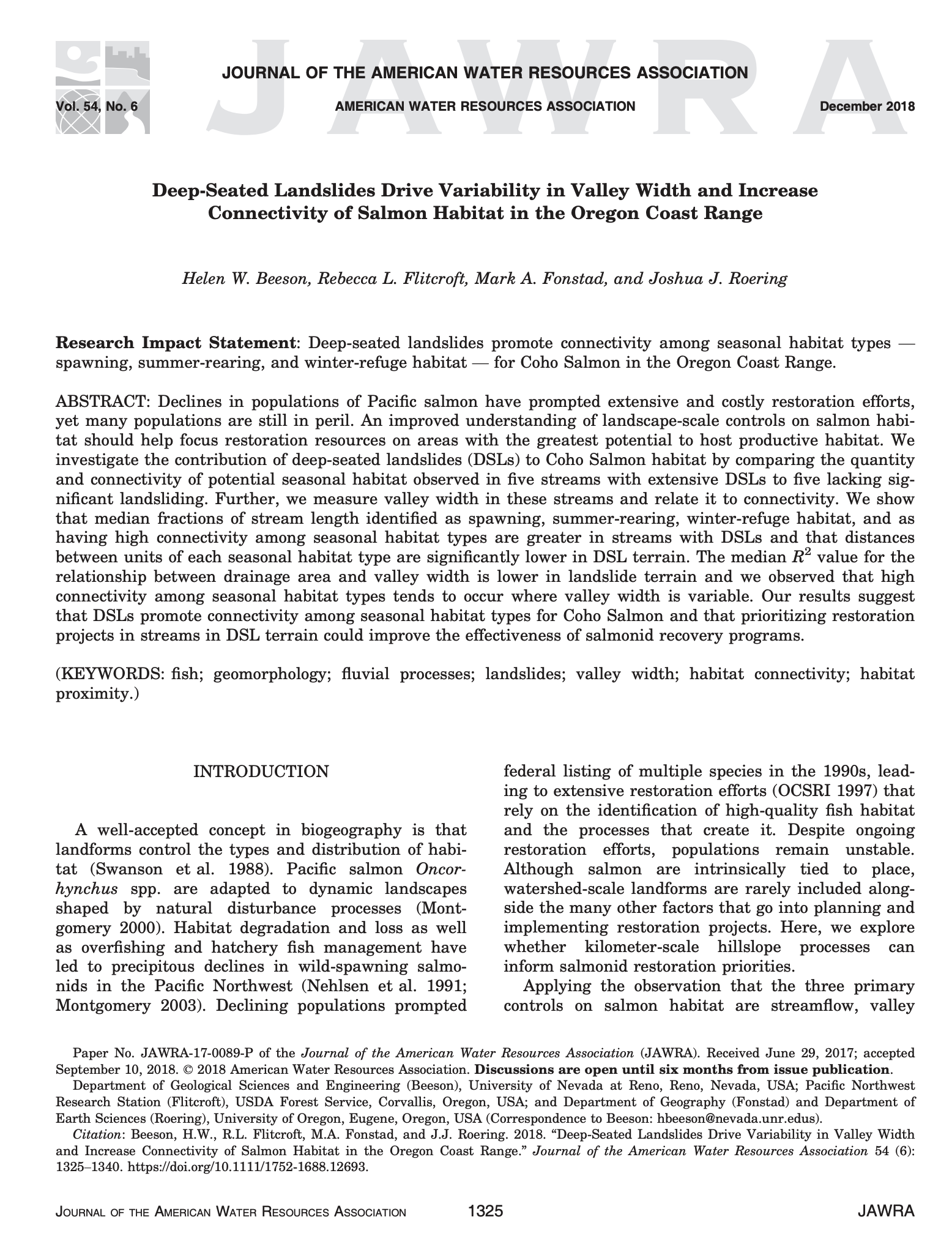
Declines in populations of Pacific salmon have prompted extensive and costly restoration efforts, yet many populations are still in peril. An improved understanding of landscape-scale controls on salmon habitat should help focus restoration resources on areas with the greatest potential to host productive habitat. We investigate the contribution of deep-seated landslides (DSLs) to Coho Salmon habitat by comparing the quantity and connectivity of potential seasonal habitat observed in five streams with extensive DSLs to five lacking significant landsliding. Further, we measure valley width in these streams and relate it to connectivity. We show that median fractions of stream length identified as spawning, summer-rearing, winter-refuge habitat, and as having high connectivity among seasonal habitat types are greater in streams with DSLs and that distances between units of each seasonal habitat type are significantly lower in DSL terrain. The median R2 value for the relationship between drainage area and valley width is lower in landslide terrain and we observed that high connectivity among seasonal habitat types tends to occur where valley width is variable. Our results suggest that DSLs promote connectivity among seasonal habitat types for Coho Salmon and that prioritizing restoration projects in streams in DSL terrain could improve the effectiveness of salmonid recovery programs.
